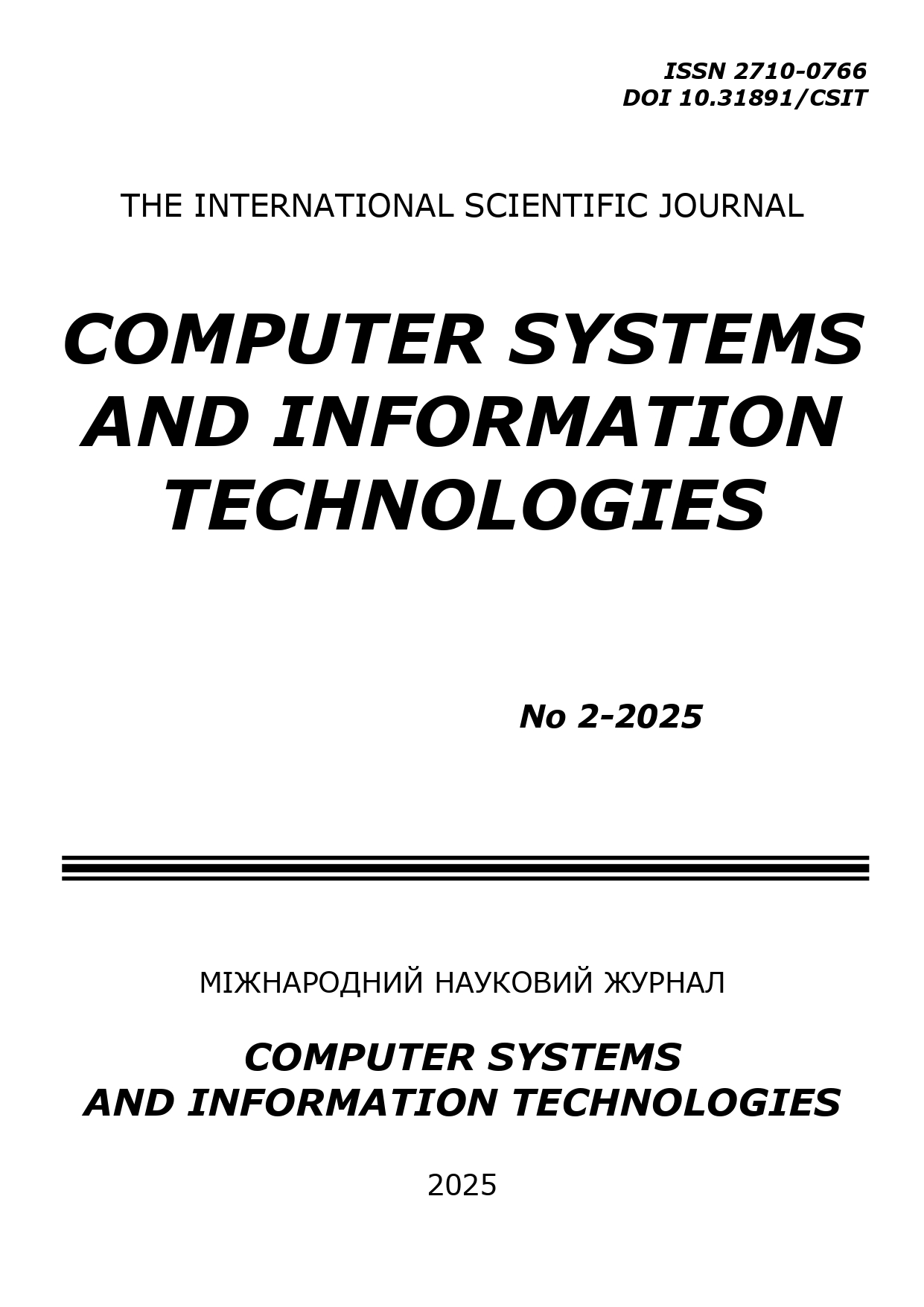IDENTIFICATION OF SOUNDS BASED ON THE HILBERT-HUANG TRANSFORM FOR THE TASK OF DETECTING UAVs
DOI:
https://doi.org/10.31891/csit-2025-2-15Keywords:
Hilbert–Huang Transform, UAV acoustic detection, drone sound classification, MFCC, non-stationary signal analysis, lightweight neural networksAbstract
This paper investigates the identification of drone acoustic signatures via the Hilbert–Huang Transform combined with machine- and deep-learning techniques. After high-pass filtering at 80 Hz, each 3-s recording is split into 25 ms frames with 50 % overlap; every frame undergoes DCT pre-whitening, HHT processing, and extraction of 13 MFCCs. The resulting averaged feature vectors—drawn from 2 075 yes_drone and 266 unknown samples—are fed into a lightweight two-layer perceptron (64 + 32 ReLU units, sigmoid output). On a held-out test set the network reaches an overall accuracy of 0.95, with a drone recall of 0.99 and an F1-score of 0.78 for the unknown class. These results outperform a baseline MFCC + SVM system and approach the performance of deeper CNN architectures, while remaining computationally suitable for real-time embedded deployment. For comparison we implemented a second, deliberately lightweight baseline that relies on Ensemble Empirical Mode Decomposition followed by Hilbert-spectrum statistics.
Downloads
Published
How to Cite
Issue
Section
License
Copyright (c) 2025 Марія БЄРЄСТОВА, Володимир МОРОЗ

This work is licensed under a Creative Commons Attribution 4.0 International License.

